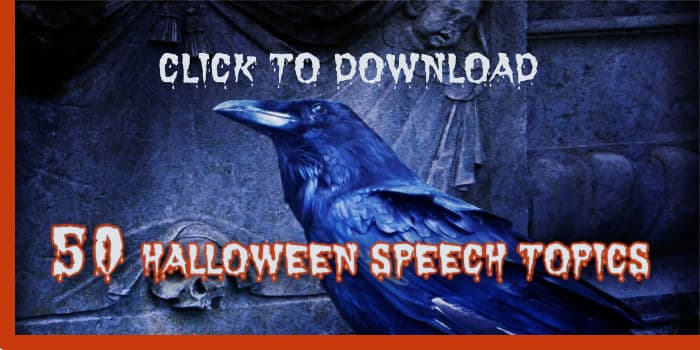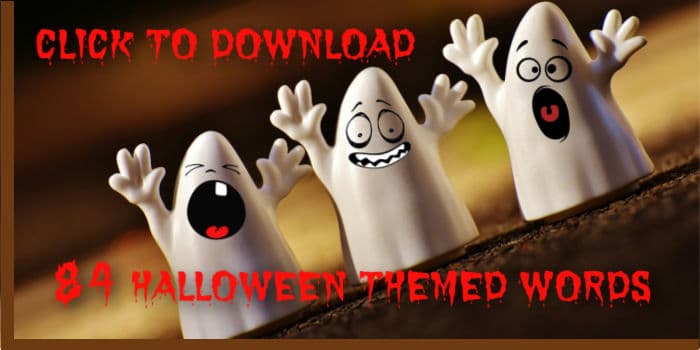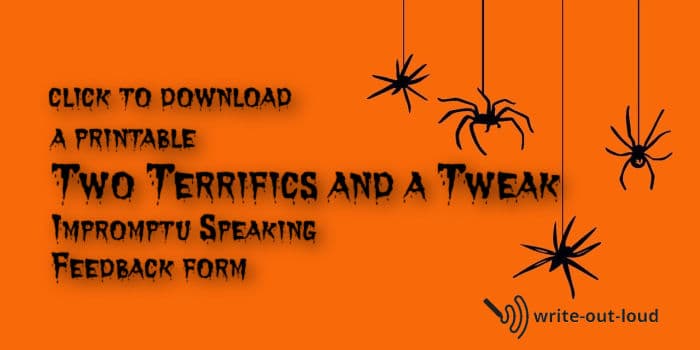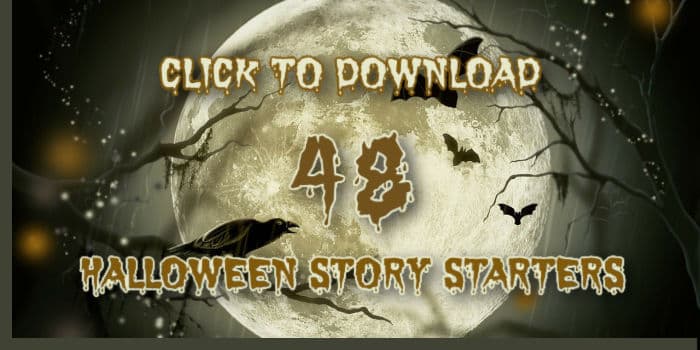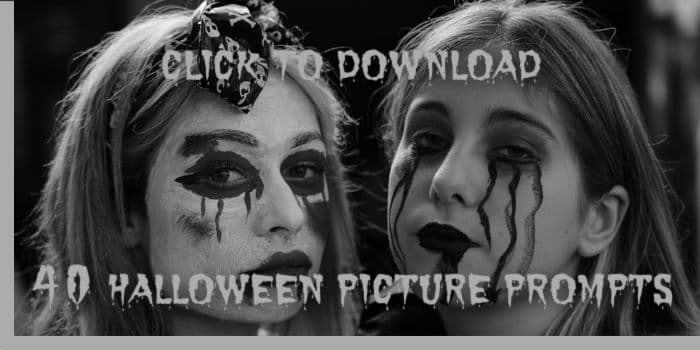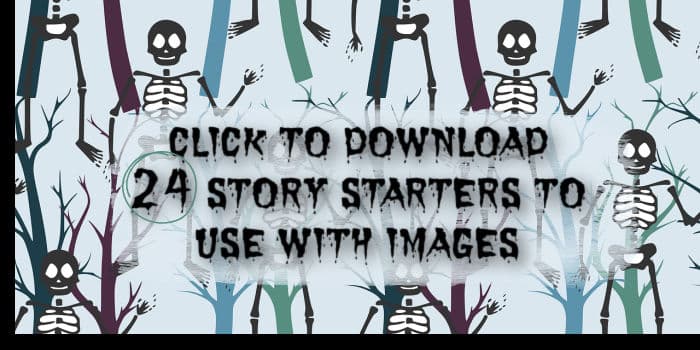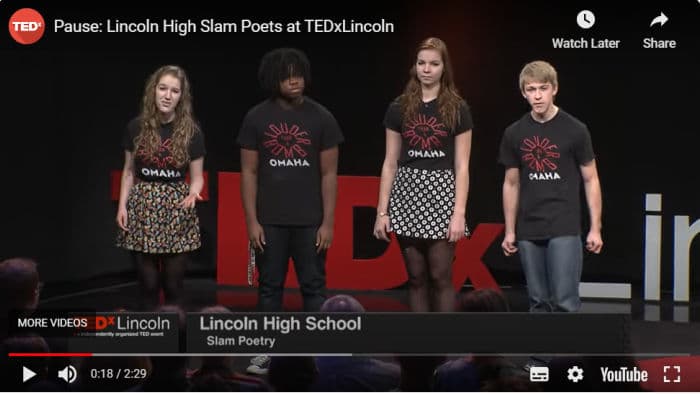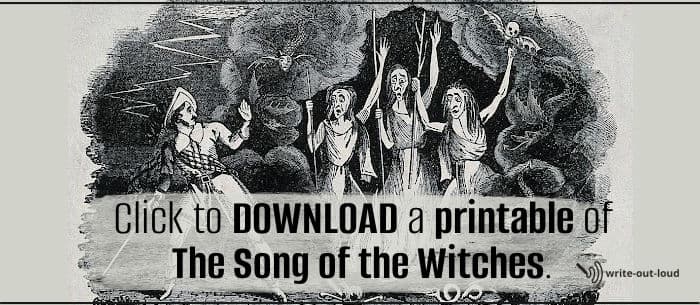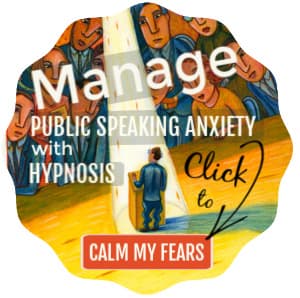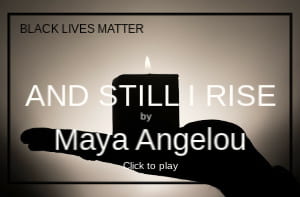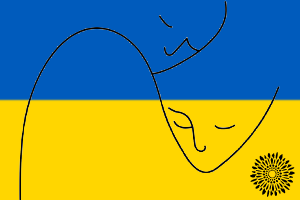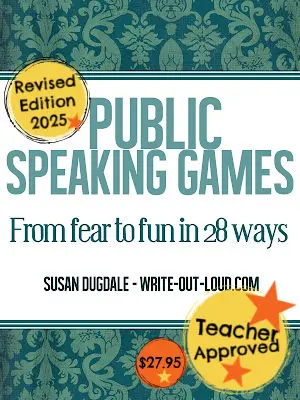- HOME ›
- Speech topics ›
- Halloween speech topics and activities
Halloween speech topics and activities
4 fun activities. 17 variations. 7 free printables. Spooktacular!
By: Susan Dugdale
Here's a collection of Halloween themed speech topics and activities - enough to give your public speaking classes a fabulously spooktacular time. They're fun, confidence, and skill building.
Use the links to get around this long page quickly
One-two minute impromptu Halloween speeches
- Download 50 Halloween speech topics printable
- Variations - Add a word, Speech take over
- Download 84 Halloween themed words printable
- Giving feedback - download a printable feedback form
Story circles using story starters
- Download 48 Halloween story starters printable
- 3 story circle variations: Add a word, Add a chorus line, Change direction
Activities using Halloween pictures
- Download 40 Halloween picture prompts
- Download 24 story starters to use with the images
- Group activities - Story circles (plus variations) using picture prompts
- Paired activities - Same picture - different starter, Expert interviews, Story retelling
- Solo activities - It's in the news, Same picture - different POV
Spooktacular poems to play with - choral speaking
- Download Double, Double, Toil and Trouble printable

One-two minute impromptu Halloween speeches
Do you believe in ghosts?
Do you avoid certain places because you are scared of them?Would you walk through a cemetery at night by yourself?
These are three of 50 Halloween themed speech topics for 1-2 minute impromptu speeches
Using them is easy!
Make deciding who speaks and what they speak about into lucky dips. Not knowing who is going to be called on to speak and on what adds to the fun.
Print and cut out the topics. Put them into a container, maybe a witch's hat.☺
The topic on the piece of paper that a person picks out is what they will speak on.
Write the name of each person in the class/group on a slip of paper. Put these in another container.
Ask someone to pick a slip out of the name container. This is the person who speaks first.
They pick a slip out the topic container to speak about.
When they're finished, they pick a slip from the name container. This person then picks out a topic to speak about and when they're done, they pick the next speaker from the name container. And so on.
Get your students actively supporting each other by having them complete a simple feedback form: Two Terrifics and a Tweak for each speaker.
Please note, this printable (pdf), and all the other printables on this page, will open in a new window.
Variation 1: Add a word or two or three
Add a word from the Halloween word list.
Print out the list and cut the words out. Put all the slips into a bag. Appoint a person whose job it is to randomly choose a word from the bag to give the speaker at either the 30 second, 60, or 90 second mark which they must immediately incorporate into their speech.
For example:
The speaker’s topic is ‘How do you know a woman is a witch?’ They have been speaking for 30 seconds. Now they are given the word ‘coffin’ to use.
They could say, ‘Which brings me to coffins. A woman who is a real witch will keep a coffin handy. She’ll use it as a type of pantry to store her witching paraphernalia: a set of turbo charged broom sticks...'
When your class becomes adept, add two or three words per speech.
Variation 2: Speech take over
Appoint a person to pick a name from the container holding the slips of paper with all the names of the people in the class on them after a speaker has been speaking for 60 seconds.
That person announces the name of the next speaker by saying, 'Take over', and adding their name. E.g. 'Take over, Sam'.
Sam must immediately pick up where the previous speaker left off.
Giving and receiving feedback
Here's a simple feedback form for students to use while listening to each other's impromptu speeches. It both, commends, acknowledges what was done well, and recommends, suggests what could be focused on the next time the person gives a speech.
Circle feedback rounds after a group activity
Gathering everyone into a circle for a short quickfire oral feedback round at the end a group activity before starting a new one is invaluable for sharing insights and acknowledgements while they are still fresh in everyone's minds.
The types of questions to ask are:
- Who heard/saw a great story/piece of work?
- What was good about it?
- Why did whatever is remarked on, (the voice the person used, the body language, the interesting vocabulary, the unexpected ending, the character development...), make it good?
- Where could the story/work have been strengthened?
- How would you do that?
Respectful, honest recognition builds trust and the willingness to experiment in front of others.
If there's time and it's appropriate, ask those whose work was singled out to repeat it for the whole group.
Scary (& not-so-scary) story starters for story circles
Splitting your class into groups of 5 - 8 people to work together on story circles is a great way to encourage creativity and develop confidence. A large part of why it works so well is because there's safety in a smaller group.
A person standing in front of their class by themselves making a speech can feel very conspicuous. A person in a group adding their contribution, while others are doing likewise in their groups, is not so exposed. The surrounding hub-bub of activity shields and cushions them.
Try story circles with Halloween themed story starters.
Print the story starters and cut them out.
Form the groups.
- Add one word at a time
Give each group a starter. Nominate a person to begin. They read the starter and add one word. The next person adds one word, the person following them adds another and so on, building a story one word at a time.
Like this:
Person 1 reads the starter, 'No one believed me about the ghost in the pantry' and adds a word: 'but'
Person 2 adds 'sounds'
Person 3 adds 'like'
Person 4 adds 'a'
Person 5 adds 'person'
Person 6 adds 'eating'
Person 7 adds 'loudly'
Person 8 adds 'could'
Person 1 adds 'often'
Person 2 adds 'be'
Person 3 adds 'heard'...
The goal is a complete story. How many rounds will it take to get there? What kind of word choices add to the drama? - Add two words at a time
Give each group a new starter. This time each person adds two words. - Then three, four or more words at a time
Change the starters. Now each person adds three, four or more words before handing the story on.
Three story circle variations
- Add in a Halloween themed word - print and cut out the words. Do a round of the groups as they are working, stopping at each of them to give a word to the person whose turn it is next to speak which they must include in whatever they say.
Repeat as you see fit. For instance, let the story continue for another 30 seconds, then add another word. And then, perhaps another. - Add a chorus line or sound
Up the nonsense factor to the power of 10 by adding a chorus line or a sound after every third or fourth contribution and encourage whole-hearted commitment to everyone saying it with passion.
For example, scary ghost sounds like, ‘Oooooooo, ooooo!' 'Eeeeeeee, eeeeee!’ or a phrase like ‘Oh wow! So scary!’ or ‘Save me! save me!’ - Change direction
After a person has had their turn, they may, if they wish, change the direction of who speaks next. They do this by placing the palms of their hands together and using them to indicate the new direction, for instance, back to the previous person who spoke, or forward to another person in the circle, other than the one they are alongside.
To avoid confusion, they must clearly say the person's name they want to speak as they point to them.
40 Halloween themed picture prompts
If a 'picture can speak a thousand words', you have an almost limitless supply of them here. Inspiration for literally squillions of speeches!
Download and print the images for group, paired and solo activities. (Laminate them and you'll have an evergreen resource you can use over and over.)

Group, paired and solo activities using the images
Group activities
Story circles - Use the images similarly to the story starters.
Give each group an image to build a story around by adding one word at a time. Next hand out a new image and then try two words. After that change the picture and try three words or more.
Variations on story circles
- Use an image AND a story starter
Download, print and cut out the 24 story starters to use with the images. The starter sometimes makes it easier for people to create a story and keep it going. - Rounding up
Try increasing the number of words per round each person contributes. Eg. round 1 = 1 word per person, round 2 = 2 words per person, round 3 = 3 words per person, round 4 = 4 words per person... - Rounding up, rounding down
Yet another variation is to go through four rounds with each person adding another word per round, as above, and then to reverse the process. On the fifth round everybody will add three words each, on the sixth they will add two and on the seventh they will add one. (And hopefully that ends the story!) - Add another picture
Get a story going. Allow it to go through several rounds and then add another image. The group's task is to integrate it into the story it's already telling. - Add a word or two from the Halloween themed word file
After a couple of rounds of a story, give a word to a person who is next in line to speak, which they must use in their response. Let another round or two go by, and then hand out another word.
Paired activities
Same picture + 2 starters = 2 different stories
Divide your class into pairs. Give each pair one picture and two starters. The task is to use the starters to tell one another a 1-2 minute story inspired by the image.
As an example, here are two starters from the story starters for images printable.
- I'm not the sort of person who scares easily...
- Suddenly, Cindy knew it was time to reveal her superpower...
And here's the beginnings of two stories sparked by the picture below.
- I'm not the sort of person who scare easily but, oh my goodness, when I saw that mask - that figure coming toward me out of the gloom of the forest, I panicked. Who was this? What did they want? (To be continued another time, TBC)
- Suddenly, Cindy knew it was time to reveal her superpower - to step up on behalf of the remnants of the endangered species of birds in the forest. She would go into battle on their behalf. She donned her mask, stood tall and became the super bird woman she always knew she was destined to be. (TBC)
Story retelling
As an extension activity, when all the pairs have finished telling their stories, gather everyone back and have them form a circle.
Ask who listened to a really good story? Would they like to share it? Have the person retelling the story show the picture that inspired it.
Story retelling provides a great opportunity to gather feedback from everyone about what was good about the stories they heard or told, and what were the tricky or problematic aspects. How those areas could be addressed?

Expert interviews
Give each pair two images.
Let them decide who will be the interviewer and who will be the expert. The expert chooses which of the two pictures they will use.
After looking at the picture, the interviewer decides what the specialty area of expertise the expert has and questions them to find out as much as they can about it.
For example, the interviewer looking at the image above might decide the expert is a professional mask maker, or maybe a devotee of a small religious sect who worship bird gods, or perhaps a bird stalker - someone who disguises themselves as a particular type of bird and visits their habitat to spy on them.
The goal is a 1- 3 minute interview covering the sorts of things that make an interview interesting: how and why they became interested in their field, who they've met through being an expert, their most notable achievements...
When the first interview is finished, the roles are swapped, and the second image is used.
Solo activities
News stories from on-the-spot reporters
Put the number of images you need for one per person face down in the middle of each group.
Nominate a person to begin. They pick up a picture, show it to the group and use it to give an on-the-spot report as if they were a news reporter.
When they have finished, the next person takes an image and uses it to give a report... and so on, around the group until everyone has done one.
Encourage enthusiasm and brevity - just enough to outline the bones of whatever is happening.
As an example, here's a report using the bird mask image above.
"Hi, it's Mandy Pritchard here for Durham News Nightly. Just in. We've heard there's a tall figure wearing a full-face bird mask walking through the woods in the Durham North area at dusk. The apparition has been seen three times over the last three days. Residents say local children are now too terrified to play in the vicinity. The police have been notified."
Same image and different points of view
The key question in this activity is how does a story about an image change, when the POV (point of view) of the person telling it changes?
Give each group the same image.
Nominate a person to start and give them a perspective or POV to use to tell their story from.
Examples could be from the perspective of:
- a five-year-old child
- a busy mother
- a homeless person
- a cashier from the local supermarket
- an uber driver
The goal is a 1 - 2 minute story reflecting some of the possible believable responses someone from the perspective given might have.
For instance, if I'm a homeless person who wants to find a quiet place in the woods to set up a camp for myself, maybe I'll use this bird-mask to terrify people, so they'll stay away, and leave me in peace.
Or if I'm a busy mother intent on trying to juggle household chores with a full-time job, a story about a person wearing a bird mask in the woods, might literally go in one ear and out the other.
"What did you say? A bird man? What? Have you seen where I put the keys to the car? I need them. Like now. Right this minute. Never mind about a bird man."
When a person has finished their turn, they give a new POV to the next speaker to use.
* All the images come from a copy-right free image sharing site: Pixabay. Thank you!
Spooktacular poems to play with: choral speaking
Having students work together in groups to present a poem is a wonderful opportunity for them to experiment with all aspects of delivery. With practice, it can be an exhilarating experience!
Additionally, choral speaking* offers ‘safety in numbers’ - a haven for students who may not be bold in a solo presentation but with the support and energy of a group behind them, you’ll see them beginning to step up and out.
A group's starting point with a poem is:
- How are they going to interpret it? What is the poem about? Can they put the story of it into their own words? How does it make them feel?
Then, they move on to:
- Are they going to say the lines together, like a chorus? Or will they split them between pairs? Or perhaps one person will take a line, then the next will take one, and so on, until the poem is done?
- How will they say the lines? Fast? Slow? With menace? Loudly? Softly? Will they overlap them slightly for dramatic effect? Which words will they emphasize?
- What will they do about pausing? For how long? When?
- Are they going to include movement? Will it be choreographed to heighten the drama? Which person in the group will oversee that?
- Will there be sound effects (SFX) underpinning the words as they are spoken? What sort? Ghost noises? Footsteps? A musical instrument? Perhaps a drum. Or a flute. Maybe a violin?
When will they occur? How loud will they be? Who will make them and how? - Will they wear costumes? Are they going to use props of any sort? A broomstick? A cauldron?
*Watch an example of choral speaking
If you're unfamiliar with choral speaking watch this powerful presentation from the Lincoln High Slam Poets at TEDxLincoln 2013. I'm glad I found it. I think it's a superb example of what is possible.
Organization: getting from poem to performance
- Introduce the activity.
- Discuss all the possibilities: a poem's interpretation, solo, duo or chorus delivery, SFX, choreographed movement, costumes, and props.
- Split your class into workable groups.
- Have them choose a poem.
- Set a presentation date, make yourself available for consultation if wanted, and let them go to work!
If you don't have suitable material on hand to use, I recommend Jeanne Croteau's generous resource: 30 Halloween themed poems suitable for kids of all ages.
It includes one the most famous: The Song of the Three Witches from William Shakespeare's play Macbeth.
Double, Double, Toil and Trouble - The Song of The Witches
This song/poem is about a broth, a truly terrible concoction of appalling ingredients, the witches are preparing for Macbeth to drink to enable him to see the future.
It uses rhyming couplets, alliteration, and a repeating chorus to great effect. Through them, we see and hear the intensifying evil as it's being brewed verse by verse.
Done well, it's mesmerizing and absolutely perfect for high school level students and above to experiment with.
For detailed analysis see: Double, Double, Toil and Trouble.

From Act 4, Scene 1, Macbeth, William Shakespeare, 1605
"Round
about the cauldron go;
In the poison’d entrails throw.
Toad,
that under cold stone
Days and nights has thirty-one
Swelter’d
venom sleeping got,
Boil thou first i’ the charmed pot.
Double,
double toil and trouble;
Fire burn, and cauldron bubble.
Fillet
of a fenny snake,
In the cauldron boil and bake;
Eye of
newt and toe of frog,
Wool of bat and tongue of dog,
Adder’s
fork and blind-worm’s sting,
Lizard’s leg and owlet’s
wing,
For a charm of powerful trouble,
Like a hell-broth
boil and bubble.
Double,
double toil and trouble;
Fire burn and cauldron bubble.
Scale
of dragon, tooth of wolf,
Witches’ mummy, maw and gulf
Of
the ravin’d salt-sea shark,
Root of hemlock digg’d i’ the
dark,
Liver of blaspheming Jew,
Gall of goat, and slips of
yew
Silver’d in the moon’s eclipse,
Nose of Turk and
Tartar’s lips,
Finger of birth-strangled babe
Ditch-deliver’d
by a drab,
Make the gruel thick and slab:
Add thereto a
tiger’s chaudron,
For the ingredients of our cauldron.
Double,
double toil and trouble;
Fire burn and cauldron bubble.
Cool
it with a baboon’s blood,
Then the charm is firm and good."
For more public speaking activities and games suitable for middle school upward

About the Author: Susan Dugdale, founder of write-out-loud.com, is a qualified teacher of English and drama with over 40 years of experience. Drawing on her professional expertise and her personal journey from shyness to confidence, Susan creates practical, real-world resources to help people find their voice and speak with power.
